 |
Feeling lucky?
Want to
search
any of my partnershops yourself
for more, better results?
(commissions earned) |
The links below
will take you
just there!!!
|
|
 |
For cult movie fans, actors hardly come any greater than John Saxon,
first and foremost not talentwise but careerwise: He started out as a teen heartthrob
in the 1950's, acting in a handful of rock'n'roll musicals, later appeared
in Spaghetti Westerns, copmovies and giallos in Italy, shared the screen with Bruce
Lee, acted in one of the first Hollywood/Bollywood collaborations, played
a seminal role in one of the best slashers of the 1980's (as well as quite
a few not so good ones), directed a zombie movie, had guest
spots on numerous primetime soaps and cult TV-shows, and worked with many
a cult director like Dario Argento, Wes Craven, David Cronenberg, Robert Rodriguez and
Quentin Tarantino - and his career is still going strong. And though it's
true that he never did have the big breakthrough in big budget Hollywood he might have deserved,
he had (and still has) a much more interesting and diverse career as a result of this,
more interesting for the cult movie fan but maybe also for himself.
Having said all that, one mustn't forget though that John
Saxon is also a man of considerable acting talent and versatility, and an
actor who could play pretty much everything, be it teen heartthrob,
actionstar, mad scientist, sleazeball or urban cannibal, and at the same
time always remain himself, something that has grown increasingly rare in
today's cinema of posterboys doubling as so-called actors.
Early Life, Early Career
John Saxon was born Carmine Orrico in 1935 in Brooklyn, New York. His
parents were immigrants from Calabria, Italy, and his father was a
dockworker. Saxon himself became interested in acting at a relatively
early age and took acting classes during highschool, actually studying
under legendary acting teacher Stella Adler. Legend has it that Saxon
also did a bit of modelling on the side, and when one of his pictures
appeared on the cover of a detective magazine, this caught the eye of
veteran manager Henry Willson, who contacted Saxon's family almost
immediately and as a result took Saxon, then 16, with him to Hollywood,
where he changed Carmine Orrico's name to John Saxon and got him a
contract with Universal
- but you know, at least some of the story sounds too cheesy to actually
be true ...
Teen Heartthrob of the
1950's Back in the 1950's, studios like Universal
treated their talent, and especially their contract players, a whole lot
different than nowadays. If a studio put young talent under contract, that
didn't mean they got roles in movies right away, no, the young contract
players were groomed for stardom, were sent to acting classes and the
like, eventually were given (mainly uncredited) bit parts in major movies
before rising to supporting actor status. Saxon's first movie credit
(not appearance) was as one of the youngsters in Running Wild
(Abner Biberman), a film about an undercover cop infiltrating a gang of
juvenile delinquents. The film, with William Campbell and Mamie Van Doren
in the leads, was well-enough handled and moderately successful, but it
came out in a time where films of this kind were a dime a dozen, and thus
hardly left a mark on cinematic history. Anyhow, the mere fact
that Saxon soon thereafter got offered a role in The Unguarded Moment
(1956, Harry Keller) is proof enough that the heads at Universal
put trust in his talent. The Unguarded Moment is a prestige film in which
Saxon received third billing
behind Esther Williams and George Nader, undeniably bigger stars than
Saxon back then. However, the film was somehow ill-conceived as it was an
attempt to provide swimming star Esther Williams with a
serious, non-aquatic role, an experiment that failed at the box office - which is a
pity, because Esther Williams isn't half bad, and the film about a student
(Saxon) unhealthily obsessed with his teacher (Williams) and a cop
(Nader) investigating a murder somehow linked to this is at least
interesting. Before Saxon appeared in either Running Wild or
The Unguarded Moment on the big screen though, he had his small-screen
debut in Walk With
Lions (1955, Ted Post), an episode of the anthology series Medic,
in which he plays a young boxer suffering from career-ending diabetes -
and in this one he proves he already has all the right ingredients to
become a teen heartthrob: good looks, quite a physique, and he could even
act ... The problem was of course that with the box office
failure of The Unguarded Moment, John Saxon was relegated to less
prestigious, more light-hearted fare the next few years, starting with the
musical comedy Rock, Pretty Baby (1956, Richard Bartlett) and its
sequel Summer Love (1958, Charles F.Haas), both of which featured
veteran actress Fay Wray, and the former also Sal Mineo. This was followed
by the Debbie Reynolds-comedy This Happy Feeling (1958, Blake
Edwards) which also starred Curd Jürgens, then came The Reluctant
Debutante (1958, Vincent Minelli) starring Rex Harrison and Kay
Kendall. The Reluctant Debutante is important for Saxon's career
inasmuch as it paired him up with teen actress (and fellow Universal
contract player) Sandra Dee (in her pre-Gidget years) for
the first time, and someone in the studio must have thought the couple was
quite successful as they got re-teamed later in 1958 in the teen drama The
Restless Years (Helmut Käutner). All this films are ok of course
and fun from a nostalgic point of view, but even though some were made by name
directors even, they did little to challenge John Saxon as an actor, and
while they were reasonably successful, they were far from smash hits. And
likewise, John Saxon's popularity back then never reached superstar status.
I feel obliged to note here though that in 1958, John Saxon actually won a
Golden Globe (together with James Garner and Patrick Wayne) for Most
Promising Newcomer - Male. Eventually, John Saxon's contract with Universal
came to an end, and he must have noticed his career as teenage heartthrob
led nowhere in particular too. Thus he decided to break the mold and, away
from Universal,
try his hand on other genres, starting with a period piece/religious
flick, The Big Fisherman (1959, Frank Borzage), a film depicting
the life of St Peter (as played by Howard Keel of all people) and the
beginning of Christianity. Not a great film and no match at the box office
to the somewhat similarly themed Ben-Hur (1959, William Wyler), the
film worked at least inasmuch as it really did present the public with
John Saxon's wider acting range. Pretty much the same can be said about Cry
Tough (1959, Paul Stanley), an at best moderately successful crime
drama that at least allowed Saxon to shine as a Puerto Rican ex-con trying
(and failing) to go straight.
Freelancing through the
1960's
It might be debatable if it was a blessing or a curse that John Saxon
did not rise to superstardom with the teen-oriented musical comedies he
did in the 1950's, because he was certainly talented enough to deserve
fame - but yet, early stardom might also have pigeon-holed him way too
early and prevented his later career as one of the USA's most prolific and
most versatile character actors to take off. The downside of this is of course that
all through the 1960's, Saxon's career seemed somewhat directionless, if
not at all uninteresting.
The 1960's began with John Huston's
Western The Unforgiven (1960), in which Saxon shared the screen
with the likes of Burt Lancaster, Audrey Hepburn and Audie Murphy. Saxon
would also play second fiddle to Audie Murphy in the Western Posse from
Hell (1961, Herbert Coleman), but before that, he was reunited with
Sandra Dee in Portrait in Black (1960, Michael Gordon) - where both
of them gave support to Lana Turner and Anthony Quinn - and he shared the
screen with Jeff Chandler in the Western The Plunderers (1960, Joseph
Pevney). Much more important for John Saxon's later career (if
less important for its actual quality) might be Agostino (1962,
Mauro Bolognini), a teen drama in which Saxon can be seen as Ingrid
Thulin's lover, who in turn plays the mother of Paolo Colombo in the title
role, a teenager falling into the wrong hands. Sure, as a film, Agostino
is pretty much forgotten by today, but it was the first film John Saxon
made in Italy, a country that would become extremely important in his
later career, as it were the films in Italy that helped turning him from a
merely talented character actor into a cult star later in his career.
Much
more important from a film-historical point of view than Agostino
was Saxon's second Italian movie, La Ragazza che Sapeva Troppo/The
Girl who Knew too Much (1963), a very early giallo (=
specifically Italian version of the murder mystery, often involving
serialkillers) by Italian horror auteur Mario Bava [Mario
Bava bio - click here], and even if that film is nowadays not
regarded one of the director's more significant films, it has the
distinction of being one of the earliest of its kind, made years before the
giallo genre became en vogue in the early to mid-1970's. Saxon's next
Italian movie was Sette contro la Morte/The Cavern (1964),
which was not only a very early spaghetti Western, it was also the last
film directed by B-movie visionary Edgar G.Ulmer. Despite being quite a
gripping piece of Western cinema though, the film has grown more and more
obscure over the years and is still waiting for rediscovery. Over the
years, John Saxon would return to Italy time and again to shoot a Western (though not nearly as
many as some sources suggest), as well as
shooting some back in the USA.
In between his Italian features,
John Saxon also made a handful of films back home in the USA, he played
the lead in the Korean war drama War Hunt (1962, Denis Sanders) and
supporting roles in the James Stewart-starrer Mr Hobbs Takes a Vacation
as well as Otto Preminger's star studded The Cardinal (1963), a
historical drama about a man's (Tom Tryon) many challenges on his way to
priesthood.
However, more than any of these high-profile movies
it was the modestly budgeted British flick Night Caller/Blood
Beast from Outer Space (1965, John Gilling) that served as a perfect
precursor of things to come, not so much because of its quality (it was
alright in fact, but far from great) but because it was Saxon's first
excursion into the horror/sci-fi realm (true, The Girl who Knew too
Much also had strong horror undercurrents, but was in all more of a
psychothriller). The slightly ridiculous plot of this film has Saxon
playing a scientist trying to stop an invasion from Jupiter, but the film
isn't half as silly as this sounds (or many of Saxon's later films
actually are).
From Great Britain it was off to the Philippines
for the war drama The Ravagers (1965, Eddie Romero) before
returning to the USA to star in the science fiction flick Queen
of Blood (1966, Curtis Harrington), an inexpensive AIP-produced
space opera/vampire film which borrowed most of its special effects from
the Russian film Mechte Navstrechu/A Dream Come True
(1963, Mikhail Karzhukov, Otar Koberidze) to obscure its low budget.
Dennis Hopper is in this one as well, but he's easily upstaged by Saxon -
though to be fair, Saxon has the much better role than Hopper. Saxon's
next film, The Appaloosa
(1966, Sindey J.Furie), sounds great in writing, a Western that gave him
the opportunity to hold his own against fellow method actor Marlon Brando,
acting-wise. The film as such though is anything but great, a
wannabe-prestige movie that is based on a plot - a guy (Marlon Brando) wants to get his
horse back from a baddie (John Saxon) and saves a woman (Anjanette Comer)
in the process - that would have been ideal for Roy Rogers (who has made
many a similarly themed Western in fact [Roy
Rogers bio - click here]) but is totally miscast with Brando
in the lead, whose method-acting even seems a bit tired in the film. At
least Saxon's Mexican outlaw doesn't sink in Brando's presence - and he
actually was nominated for a Golden Globe for his performance -, but then
again his clichéed role was too simle to play for an actor of Saxon's talent
to fail. In 1968, John Saxon returned to Italy on one hand and
to the Western genre on the other with the comedy I Tre che
Sconvolsero il West (Vado, Vedo e Sparo)/One Dollar Too Many
(1968, Enzo G.Castellari [Enzo
G.Castellari bio - click here]). The film, which features
Antonio Sabato, Frank Wolff and Saxon (playing a dandy-like cardshark) in
the leads as a trio of conmen chasing a suitcase full of money, might be
nothing special but it's at least a well-directed and likeable little movie from the time before Bud
Spencer and Terence Hill virtually made the slapstick side of the
spaghetti Western their own. There is little of interest about For
Singles Only (1968, Arthur Dreifuss), a soap-opera-style film about an
apartment building filled with singles that tries to follow multiple
storylines - yet fails and is by now largely forgotten, and for a reason. The
Western Death of a Gunfighter (1969, Don Siegel, Robert Totten) is
of filmhistorical importance inasmuch as it is reportedly the first film
ever to be credited not to its actual directors but to one Alan Smithee (then
spelled Allen Smithee), a name that would soon become the favourite alias
of all directors ashamed of certain films. The film starring Richrad
Widmark in the lead isn't half bad though ...
John Saxon, Television Star As
mentioned above, John Saxon played his first lead (in front of the camera)
not in a feature film but on television, on the show Medic,
and over the following years, he had returned to the medium every once in
a while. It wasn't until the mid-1960's though that his TV-workload
increased, at times even overshadowing his filmwork.
In the
later half of the 1960's, Saxon starred in a handful of TV-movies - back
then a much more ambitious genre than they are now - almost
back-to-back, films like the Rod Serling-scripted Doomsday Flight
(1966, William A.Graham), the Western-remake Winchester 73 (1967,
Herschel Daugherty), and Istanbul Express (1968, Richard Irving).
Besides that he could also be seen guest-starring on numerous TV-shows
during that time, including Gunsmoke (1965, 1966, 1967,
1975) Dr.Kildare (1966), The
Time Tunnel (1967), Cimarron Strip (1967), It
Takes a Thief (1968), The Name of the Game (1968), Bonanza
(1967, 1969), Ironside (1967, 1970) and The Virginian
(1967, 1968, 1971) - but his real breakthrough came with a starring role in the
medical drama series The Bold Ones: The New Doctors (1969 -
1972), a series he stayed with for its first three seasons.
| 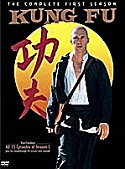
 Flix.com Flix.com
|
|
| 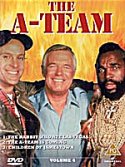
 Flix.com Flix.com
|
|
| 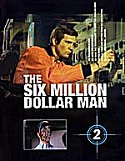
 Flix.com Flix.com
|
|
The Bold Ones: The New Doctors
didn't keep Saxon from appearing in a couple of TV-movies as well though, Company
of Killers (1970, Jerry Thorpe) and The Intruders (1970,
William A.Graham), and he made guest appearances on quite a number of
other shows, like Rod Serling's Night Gallery (1972) and The
Sixth Sense (1972), and once he left the medical drama, that left
hardly a bump in John Saxon's television career, as he was quick to get
guest roles on Kung
Fu (1972) - even before his starring role in Enter
the Dragon (1973, Robert Clouse) (more about that below) - as well
as Kung Fu: The Legend Continues (1996), both starring David
Carradine, The Streets of San Francisco (1973) starring Karl
Malden and a young Michael Douglas, The Rookies (1973), Police
Story (1973), Mary Tyler Moore (1974), the Lee
Majors-starrer Six Million Dollar Man (1974, 1976) and its
spinoff Bionic Woman (1976), Petrocelli
(1975), The Rockford Files (1976), Starsky and Hutch
(1976), Wonder Woman (1976), the short-lived Fantastic
Journey (1977), Quincy M.E. (1977), Greatest
Heroes of the Bible (1978), Hawaii Five-O (1978), Fantasy
Island (1978, 1979, 1981, 1984), Vega$ (1980)
starring Robert Urich, Hardcastle and McCormick (1983)
starring Brian Keith, The A-Team (1983, 1985), the Tom
Selleck-starrer Magnum, P.I. (1984), Murder, She Wrote
(1984, 1988, 1994), Hotel (1987), The Ray Bradbury
Theater (1989), Matlock (1991) and Lucky Luke
(1993) starring Terence Hill - and no matter how bad some of these shows
were, and some were pretty bad, Saxon always turned in an at least solid
performance. But if you think, above reads pretty much like a best
of of tv-shows from the 1970's and 80's, I should maybe also point out
that in the 1980's and beyond, Saxon also tried his hands on a handful of
prime time soaps, playing recurring roles on Dynasty (1982 -
1984), Falcon Crest (1982 - 1988), Another World
(1985 - 1986) and even the original Melrose Place (1994 -
1995). Of special mention are two (ultimately failed) TV pilots
though John Saxon made in the mid-1970's. The first one was Planet
Earth (1974) directed by Marc Daniels and conceived by Gene
Roddenberry of Star
Trek-fame. The basic plot of this film (and the series that
was supposed to follow) was that John Saxon played a scientist from the
20th century thrown into the post-apocalyptic world of the 22nd century
where he helps a peaceloving and science-friendly community against savage
tribes of all sorts (including amazons). The interesting thing about this
pilot is that Roddenberry had tried to sell this concept only a year
before with the pilot Genesis
II (1973, John Llewellyn Moxey), with Alex Cord playing Saxon's
role, but had failed the first time around as well (hence the second
pilot). Still, Planet Earth
was not conceived as a remake of Genesis
II (as is sometimes claimed) but a direct sequel, with a mostly
different cast (though no character changes). But if you think that it might be a tad
short-sighted to try to launch a TV-series after the initial pilot had
failed just the year before, then all I can say is, it worked for
Roddenberry with Star
Trek ... As mentioned above, Planet
Earth, too, failed to spawn a series, but it's more than obvious
that nobody blamed John Saxon for it - which neatly leads to the second
pilot I intended to talk about: As soon as 1975, Roddenberry's Genesis
II-concept was revamped to build the base for yet another
pilot, Strange New World (Robert Butler), and again, John Saxon
would play the lead (who this time around is an astronaut though rather
than a 20th century scientist) - but yet again, the pilot failed to catch
on, and after this, the Genesis
II-concept was finally laid to rest for good.
Becoming a cult icon: The
1970's and 80's
In the 1950's and 60's, John Saxon was busy
enough building himself a reputation as an actor who could play pretty
much everything, yet for some reason he never made it to the actual
A-list, and while he would every now and again head a B-movie or play the
lead in a foreign genre piece, he was relegated to supporting roles only
in actual high profile films. This by the way never really changed
throughout Saxon's career, but in the 1970's and 80's, he proved to have
quite a lucky hand when choosing his B-list roles, roles that eventually promoted
him to cult-status, which is more than most A-listers can even hope to
achieve.
| 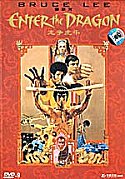
 Flix.com Flix.com
|
|
The first few films Saxon made in the 1970's (outside
of his TV-work) seem to be hardly too promising, a Clint
Eastwood-Western, Joe Kidd (1972, John Sturges), in which he was
relegated to playing second fiddle, an ill-conceived World War II-drama
co-starring Tippi Heren, Mister Kingstreet's War (1973, Percival
Rubens), and an Italian-lensed drama, Baciamo le Mani (1973,
Vittorio Schiraldi), which never got much attention from anyone.
Then
though he got the offer to play the (nominal) lead in a martial arts film
- then a very novel genre in Hollywood while already staple in Hong Kong -
co-starring Hong Kong's biggest star, Bruce Lee. The film in question is of
course Enter
the Dragon (1973, Robert Clouse), a film that might be vastly
overrated judged by its own merits but that helped make Bruce Lee from a
local phenomenon into an international star (though unfortunately, Lee
died shortly after starring in this one). In a way, Saxon seems to be a
perfect choice for starring in Enter
the Dragon, he was physically fit and even athletic and was a
trained martial artist - but unfortunately, he was not trained in fighting for the camera, and since action choreographers
these days were rare in Hollywood, Saxon's fights look somehow lame
compared to his co-stars', which besides Bruce Lee also include later
blaxploitation icon and former Karate champ Jim Kelly and Bolo Yeung. Furthermore, Saxon's role is
way too obviously just conceived to give Western audiences a
identification figure to really work (obviously the producers did not
totally believe in Bruce Lee's star power - and were sadly mistaken). All of
this means of course that despite being on screen quite a bit, Saxon fails
to impress in Enter
the Dragon, a film that is less about acting than about fighting,
and ultimately, he is upstaged by most of his co-stars, especially of
course Lee, Kelly and Yeung, and the film by itself did not
do as much for his career as it did for that of the others - but that
said, while Bruce Lee died shortly afterwards and was never allowed to
show his full potential, both Kelly and Yeung (and quite a few others who
used this film as launching pad) remained one-trick-ponies throughout
their career, who never really managed to shake their martial arts-ties to
expand to other genres. And as far as it comes to this, Saxon had no
problems after Enter
the Dragon ...
Black Christmas (1974, Bob
Clark) is interesting inasmuch as it has actually gathered notoriety over
the years. Upon its initial release, it was little more than a little
thriller about a serialkiller with a predilection for young girls, but
when a few years later films like Halloween
(1978, John Carpenter) and Friday
the 13th (1980, Sean S.Cunningham) made big bucks at the box
office and turned what would become known as the slasher movie into a
profitable genre, it was suddenly regarded as the blueprint for all
of these films (though it was hardly the first film having ewmployed the
slasher formula). John Saxon would play a policeman in this one, interestingly a
part he would later also play in quite a few slashers in the early 1980's
when the genre was blooming. Metralleta 'Stein' (1975,
José Antonio de la Loma) was an interesting character study shot in Spain
that pits Saxon's bank robber against Francisco Rabal playing the police
officer after him, and it marks the first of a string of rather
interesting cop movies shot in Europe, mostly Italy, that gave his career
a rather interesting spin while the films Saxon made in the USA during the
same time (only a handful) are best described as less than exciting,
boring even.
| 
 Flix.com Flix.com
|
|
| 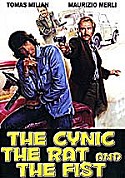
 Flix.com Flix.com
|
|
Saxon's Italian films during that era include La
Legge Violenta della Squadra Anticrimine (1976, Stelvio Massi), which
was also Lee J.Cobb's final film, Italia a Mano Armata/A Special
Cop in Action/Cop Hunter (1976, Marino Girolami), Una Magnum
Special per Tony Saitta/A Special Magnum for Tony Saitta/Blazing
Magnum (1976, Alberto De Martino), Napoli Violenta/Violent
Naples (1976, Umberto Lenzi [Umberto
Lenzi bio - click here]), Mark Colpisce Ancora/Mark
Strikes Again (1976, Stelvio Massi) and, Il
Cinico, l'Infame, il Violento/The
Cynic, the Rat and the Fist (1977, Umberto Lenzi).
It should be
noted here that in these films, Saxon played parts on both sides of the
law, and even if this film differed drastically in quality as well as budget, they were a welcome change to US-American action cinema of the
mid- to late 1970's, when the genre, apart from the occasional highlight,
had hit a bit of a stagnant bump, while its Italian counterpart was
red-blooded and full of action, violence and a bit of sex, and while by
and large, these Italian films were a bit on the trashy side, they also
gave the audience what it wanted to see - ironic then that these films
would probably never have been made without the success of American movies
like Dirty Harry (1971, Don Siegel) and French Connection
(1971, William Friedkin).
Careerwise, Saxon did not stop at Italy,
where he had family ties to, but even went to India for a movie in 1978, Shalimar/Raiders
of the Sacred Stone (Krishna Shah), one of the first (and still
one of the few) films that combined Bollywood and Hollywood filmmaking,
starring besides Saxon and Rex Harrison also Hindi superstar Dharmendra.
The outcome is not as great as all of this may sound, but a fun,
comicbook-style heist movie that may lack depth but is all the more
entertaining for it.
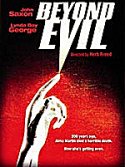
 Flix.com Flix.com
|
| |
Back in the USA, the low budget, drive-in-end of the film industry got hold of Saxon with films like the animal horror
The Bees (1978, Alfredo Zacharias), a Mexican-American
co-production also starring John Carradine [John
Carradine bio - click here], the revenge-flick The Glove
(1979, Ross Hagen), the ghoststory Beyond Evil (1980, Herb Freed),
the cult space opera cheapo Battle
Beyond the Stars (1980, Jimmy T.Murakami) also starring Robert
Vaughn, George Peppard and Sybil Danning [Sybil
Danning bio - click here], the kind-of-original monster movie Blood
Beach (1980, Jeffrey Bloom), the forgettable sci-fi-adventure Prisoners
of the Lost Universe (1983, Terry Marcel) starring Richard Hatch
and Kay Lenz, or The Big Score (1983), a (too) late entry into the
blaxploitation genre directed by and starring Fred Williamson.
| 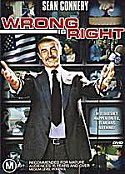
 Flix.com Flix.com
|
|
| 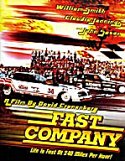
 Flix.com Flix.com
|
|
Sure,
during that period, Saxon made a few higher-profile movies as well, like
David Cronenberg's dragster epic Fast
Company (1979), unfortunately one of the weakest films of the
director, the boring rodeo-drama The Electric Horseman (1979,
Sydney Pollack) starring Robert Redford and Jane Fonda, or the underrated
satire Wrong is Right (1982, Richard Brooks) starring Sean Connery
- but none of this films has become half of a classic many of Saxon's
B-efforts have become. By the way, Saxon would team up with Richard Brooks, the
writer/director of Wrong is Right, again in 1985 for Fever Pitch,
which would remain Brooks' last film ...

 Flix.com Flix.com
|
| |
All through the 1980's, Saxon continued
to return to Italy - so frequently in fact that he by and by learned the
language - to make films. Most of it was rather forgettable genre fodder
though, films like the giallo Assassinio al Cimitero Etrusco/Scorpion
with Two Tails/Murder in an Etruscan Cemetery (1982, Sergio
Martino), the sci-fi flick Vendetta dal Futuro/Hands of Steel/Fists of Steel/Return
of the Terminator/Atomic Cyborg (1986, Sergio Martino) and the
weak slasher Nightmare
Beach/Welcome to
Spring Break (1988, Umberto Lenzi [Umberto
Lenzi bio - click here]), among others.
| 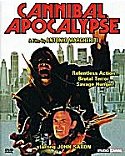
 Flix.com Flix.com
|
|
Two of
Saxon's Italian movies from the 1980's though deserve special mention:
- In Apocalisse
Domani/Cannibal
Apocalypse (1980, Anthony M.Dawson aka Antonio Margheriti [Antonio
Margheriti bio - click here]), Saxon plays a Vietnam vet
whom some experimental drug is slowly turning into a cannibal. The
film is interesting inasmuch as it doesn't only shed a slightly
different light on war veterans but it also puts a new spin on the
cannibal genre - that has grown rather stale by 1980 - by placing the
action in urban settings rather than the jungle. And while the film
might be no masterpiece, maybe not even one of director Margheriti's
better films, it still deserves its cult status for its rather
original approach to its subject, its (admittedly faint) pacifist
message and its rather intelligent treatment of its topic. And Saxon
puts in one of his best performances, actually ...
| 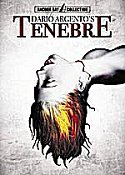
 Flix.com Flix.com
|
|
- Tenebre (1982)
marked cult director Dario Argento's return to the giallo genre he
helped develop after 7 years of absence - only to prove he has
forgotten nothing while away from the genre doing ghost stories. The
lead in this one is played by Anthony Franciosa as an American mystery
writer getting caught up in a murder series in Italy. John Saxon plays
Franciosa's somewhat shady agent who might have swomething to do with
the murders with aplomb.
The film with which John Saxon finally became a horror icon was
produced back in the USA in 1984 though, was directed by Wes Craven and was
called A Nightmare
on Elm Street, in which Saxon plays lead and final girl Heather
Langenkamp's cop dad, who doesn't believe a word she is saying about dream
killer Freddy
Krueger (Robert Englund [Robert
Englund bio - click here]) and who is indirectly responsible
for the deaths of most of her friends in the process - even though it was
him (among others) who killed Krueger and made him to the dream killer all
those years back. True, Saxon's role in this film is a tad one-dimensional
(not that a multi-layered character would have been needed here), but
Saxon's performance is as solid as can be. The impact of A Nightmare
on Elm Street was significant for Saxon's further career and
horror credibility inasmuch as this was not just another B-, grindhouse-
or drive-in-movie he had made plenty of over the years, this film was big,
and not only at the box office, it also got worldwide theatrical
distribution, was soon made into a series, and created quite a few
spin-offs, mainly on television.
Now it of course cannot be
denied that the central character of the Nightmare
on Elm Street-series was of course Freddy
Krueger as played by Robert Englund and not John Saxon's
chief of police, as the main villain of a story is the meatier, more
colourful and more interesting part almost by definition, but that didn't
keep Saxon from appearing in two sequels of the long-running series, A
Nightmare on Elm Street 3: Dream Warriors (1987, Chuck Russell)
and Wes Craven's own (rather failed) re-thinking of his series,
New Nightmare (1994).
John Saxon seems to not have
minded too much about his new-found fame in the horror genre, because when
he made his first (and so far only) film as a director, it was a horror
flick, Death House/Zombie Death House (1987), in which he cast himself in the role of a
mad scientist. Unfortunately, the results were less than
thrilling ...
Away from the horror genre, and from television,
where he was still going strong (see above), Saxon's career had hardly
anything interesting to offer in the latter part of the 1980's, all
culminating probably in House Made of Dawn (1987, Richardson
Morse), a very weak film based on a Pulitzer Prize winning novel by
N.Scott Momaday in which Saxon played a Native American medicineman -
which is nothing if not a bit of a stretch, and one would have expected a
bit more sensible casting in the 1980's - but that said, his performance
is among the more memorable in the film. Even within the horrorgenre
though, not everything was great, or how else do you explain My Mom's a
Werewolf (1989, Michael Fischa)?
Further Exploits/Further
Exploitation - The 1990's and 2000's
By
1990, the film business had changed quite considerable from what it was
even ten years before: The blockbuster, a phenomenon developed no sooner
than the mid-1970's, had pretty much taken over most screens of the
moviehouses worldwide. There were almost no more drive-ins or grindhouses
for B-movie entertainment, and while low budget films were still produced
(and are to this day of course), at least those of the bigger studios had
a much more streamlined feel to them, as with their market firmly cornered
(homevideo, mostly), tested and researched, the adventurous element and
chuzpe of B-movie producers of earlier decades who tried (and sometimes succeeded)
to conquer the top of the box office charts has gone
missing. The Italian film industry, where John Saxon had made some of his
best films, was no more, having made way for mostly indistinguishable big
budget fare from Hollywood, and with it went one of the most dependable
supplier of sometimes schlocky yet often enjoyable and memorable genre
fodder.
Sure, John Saxon had no
problems staying in the business thanks to his recongnizability,
dependability, versatility, and of course talent, but the films he made in
the 1990's and 2000's were hardly on par with those (at least the better
ones) he made in previous decades, and were hardly memorable as well - or
who remembers The Last Samurai (1990, Paul Mayersberg), the David
Hasselhoff-flick The Final Alliance (1990, Mario DiLeo), Aftershock
(1990, Frank Harris), Blood Salvage (1990, Tucker Johnston), The
Arrival (1991, David Schmoeller), the Keith Carradine-starrer Payoff
(1991, Stuart Cooper), the unfinished historical Gengis Khan (1992, Ken
Annakin), the Sam Jones-vehicle Maximum Force (1992, Joseph Merhi),
the erotic thriller Animal Instincts (1992, Gregory Dark) also
starring Jan Michael Vincent and David Carradine, Hellmaster (1992,
Douglas Schulze), The Baby Doll Murders (1993, Paul Leder), Killing
Obsession (1994, Paul Leder), Frame-Up II: The Cover-Up (1994,
Paul Leder) also starring Wings Hauser, the rather neglectable Beverly
Hills Cop III (1994, John Landis), The Killers Within (1995,
Paul Leder) featuring yet another of the Carradine clan, Robert, Liz:
The Elizabeth Taylor Story (1995, Kevin Connor) with Sherilynn Fenn in
the title role and Saxon playing writer/director Richard Brooks, with whom
he actually shot two films in the 1980's (see above), Lancelot,
Guardian of Time (1997, Rubiano Cruz) with Marc Singer in the title
role, the bible story set in
modern times Joseph's Gift (1998, Philippe Mora), Criminal Minds (1998, Thomas Baumann), Living in
Fear (2001, Martin Kitrosser), Night Class (2001, Sheldon
Wilson), The Craving Heart (2006, Stan Harrington), God's
Ears (2007, Michael Worth), the drugs-in-retirement comedy Old Dogs
(2009, Jonathan Fahn), the werewolf/war movie War Wolves (2009,
Michael Worth) also starring Tim Thomerson and Adrienne Barbeau, and the
serialkiller flick The Mercy Man (2009, Rider McDowell)?
Of
course, to reduce Saxon's output in the past two decades to
above-mentioned films is neither fair nor is it totally accurate, he has
appeared in a handful of cult movies or films with cult potential, and
even if compared to earlier decades they were
few and far between, they all at least deserve a mention:
-
Jonathan
degli Orsi/Jonathan
of the Bears (1993) was director Enzo G.Castellari's [Enzo
G.Castellari bio - click here] long-awaited and long-announced
semi-sequel to his own Western masterpiece Keoma
(1976), once again starring Franco Nero [Franco
Nero bio - click here]. And while the new film, with Saxon
playing the villain, is no match for the original one, it is, taken by
its own merits, a very entertaining and well-made Western - that
somehow never got a proper release.
-
In the Quentin Tarantino-scripted instant-cult vampire
comedy From Dusk
Till Dawn (1996, Robert Rodriguez) Saxon finds himself a
member of a great ensemble of cult actors of one genre or another,
including, besides Tarantino himself, Harvey Keitel, Juliette Lewis,
George Clooney, Salma Hayek, Cheech Marin, Danny Trejo, Tom Savini,
Fred Williamson and Michael Parks.
| 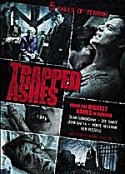
 Flix.com Flix.com
|
|
-
And speaking of Quentin Tarantino, who has always been
a fan of nostalgic cult cinema: He also gave John Saxon a guest spot
on Grave Danger: Volume 1 (2005), an episode he directed for
the series CSI: Crime Scene Investigation. On this one,
Saxon shared the limelight with Tony Curtis, Frank Gorshin and Andrew
Prine.
-
Trapped Ashes (2006) is an anthology horror
movie co-directed by cult-directors Joe Dante, Sean S.Cunningham,
Monte Hellman and Ken Russell, and special effects man John Gaeta.
John Saxon is in Hellman's segment.
-
2006 also reunited John Saxon with Italian horror
maestro Dario Argento in Pelts, an episode of the somewhat
uneven series Masters of Horror. This episode has Meat
Loaf of all people in the lead as a fur trader haunted by his own furs
...
The Future ...
Now that's pretty much it, John Saxon's career so far, and whoever
calls it anything less than impressive is ... well, a liar - but even if
John Saxon is not the youngest anymore (he will be turning 75 later in
2010) he doesn't show any signs of slowing down, currently acting in City
of Shoulders and Noses (2010, Ralph Hemecker), a family
drama/comedy/thriller that will also feature Lou Ferrigno [Lou
Ferrigno bio - click here], Sybil Danning [Sybil
Danning bio - click here] and Robert Carradine - and while the
film is far from finished yet, it at least sonds promising ...
|